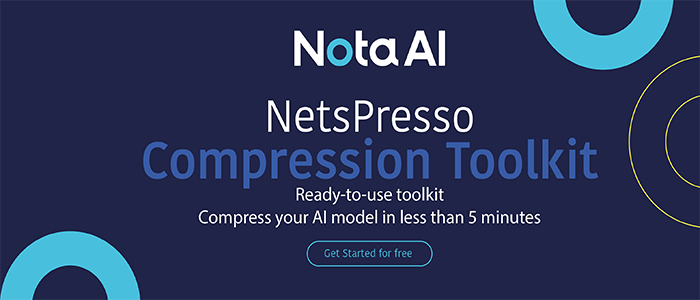Using AI, Stanford Researchers Develop An Algorithm To Detect Illegal Deforestation With The Help Of Satellite Images
This Article Is Based On Stanford article 'Detecting Modern-Day Slavery From the Sky'. All Credit For This Research Goes To The Stanford Researchers 👏👏👏 Please Don't Forget To Join Our ML Subreddit
Deforestation has long been considered an environmental concern, but illicit logging in rainforests is increasingly an international organized criminal problem. Forests cover 31% of the earth’s surface, sustain the livelihoods of 1.6 billion people, and are home to 80% of the world’s terrestrial animal and plant species. However, in certain world places, soaring deforestation rates are losing their rich biodiversity.
Even when increased precision and dependability are achieved—for example, with the help of satellite technologies that enable real-time tracking and increasingly comprehensive observation of forest canopies—filtering vast volumes of data may be time-consuming, labor-intensive, and costly. A lack of proper forest monitoring is part of the problem, worsened by the difficulty of acquiring precise and consistent geographical data on deforestation. Similar issues arise from the massive amounts of data that may now be collected through drones. Furthermore, investigations have revealed that conditions identical to slave labor as defined by Brazilian law are not commonplace in tiny logging camps in Pará.
Researchers at Stanford’s Human Trafficking Data Lab created a technique to detect forced labor at deforestation locations in Brazil’s Amazon jungle using artificial intelligence and low-cost satellite photography. Forced labor is used in legitimate and criminal deforestation initiatives, and Brazilian authorities have pursued these abuses for years. However, the locations are routinely abandoned before inspectors can reach them since they are isolated and transient.

The new approach overcomes this obstacle by identifying one of the specific markers of intensive deforestation: significant clusters of charcoal stoves that transform fallen timber into charcoal. The tent-shaped ovens usually have a diameter of three meters and are arranged in long rows.
According to a new application that uses artificial intelligence technology to help anticipate deforestation before it happens, over 10,000 square kilometers of the Brazilian Amazon, an area the size of Lebanon, is in great danger of being removed.
PrevisIA (from the Portuguese previso, which means “forecast,” and IA, which means “artificial intelligence”) analyses photos from European Space Agency satellites and, using an algorithm developed by the Brazilian conservation charity Imazon, identifies regions at risk of deforestation.
According to studies published in scientific journals, 95 percent of the Amazon’s accumulated deforestation occurs within a 5.5-kilometer (3.4-mile) radius of roads, and 90 percent of annual fires occur 4 kilometers (2.5 miles) from illegal roads built in the middle of the forest for logging, mining, and land grabbing.
From 2018 through 2020, the Stanford team gathered data from labor inspection reports at hundreds of charcoal-burning plants. They then used satellite pictures to designate around 200 places at the inspections. They were able to construct an extensive dataset for training AI image-recognition systems. The program was able to identify new deforestation locations using current satellite photos, which are acquired daily, by learning the visual signals of past verified deforestation sites.
Planet Labs, a San Francisco-based corporation, runs over 150 small image-capturing satellites, most of which are the size of a shoebox. The satellites pass practically daily over the majority of the planet, allowing for real-time monitoring of almost any area. Analysts can follow changes from day to day or year to year thanks to the company’s database of all those photographs.
The Stanford team hopes to contract with Planet Labs for selected high-resolution satellite pictures to further their work. This would allow them to collect clear evidence concerning suspicious locations in low-resolution photos. However, the larger goal is to create an integrated platform that would automatically alert Brazilian investigators. The Stanford team now provides the picture analysis, but the researchers expect that local authorities will be able to utilize it independently in the future.
However, developing an initial algorithm based on patterns observed by investigators on the ground is merely the first step.
The team is also establishing a mechanism with its Brazilian colleagues, notably the Federal Labor Prosecution Office, to automate the procedure and assist investigators and rescuers in mobilizing more quickly.
Conclusion:
The primary goal of this project was to create a platform that used satellite photos from sensors and Artificial Neural Networks to identify everyday deforestation in the Amazon basin. The proposed tool parameterizes the setup for neural network training, determining the optimal neural architecture to solve the problem. This investigation helped researchers comprehend the deforestation processes in the Amazon rainforest while also verifying the accuracy of the deployed neural network categorization.
Source: https://hai.stanford.edu/news/detecting-modern-day-slavery-sky
References:
- https://news.mongabay.com/2021/08/new-artificial-intelligence-tool-helps-forecast-amazon-deforestation/
- https://theglobalobservatory.org/2020/11/how-can-artificial-intelligence-help-curb-deforestation-amazon/
Credit: Source link


Comments are closed.